One mole of a gas is subjected to two process AB and BC, one after the other as shown in the figure. BC is represented by . We can conclude that (where T = temperature, W = work done by gas, V = volume and U = internal energy).

The correct Answer is:D
By
.
Topper's Solved these Questions
- KINETIC THEORY OF GASES AND THERMODYNAMICSBOOK - A2ZCHAPTER - KINETIC THEORY OF GASES AND THERMODYNAMICSEXERCISE - Application Of First Law Of Thermodynamics In Different Situations
25 Videos
- KINETIC THEORY OF GASES AND THERMODYNAMICSBOOK - A2ZCHAPTER - KINETIC THEORY OF GASES AND THERMODYNAMICSEXERCISE - Second Law Of Thermodynamics
29 Videos
- KINETIC THEORY OF GASES AND THERMODYNAMICSBOOK - A2ZCHAPTER - KINETIC THEORY OF GASES AND THERMODYNAMICSEXERCISE - Ideal Gas Equation
32 Videos
- GRAVITATIONBOOK - A2ZCHAPTER - GRAVITATIONEXERCISE - Chapter Test
29 Videos
- MOCK TESTBOOK - A2ZCHAPTER - MOCK TESTEXERCISE - Motion With Constant Acceleration
15 Videos
Similar Questions
One mole of a monoatomic gas is enclosed in a cylinder and occupies a volume of 4 liter at a pressure 100N/m2 . It is subjected to process T==αV2, where α is a positive constant , V is volume of the gas and T is kelvin temperature. Find the work done by gas (in joule) in increasing the volume of gas to six times initial volume .
View SolutionTwo moles of a monoatomic ideal gas undergoes a process AB as shown in the figure. Then, find the work done during the process in Joule.
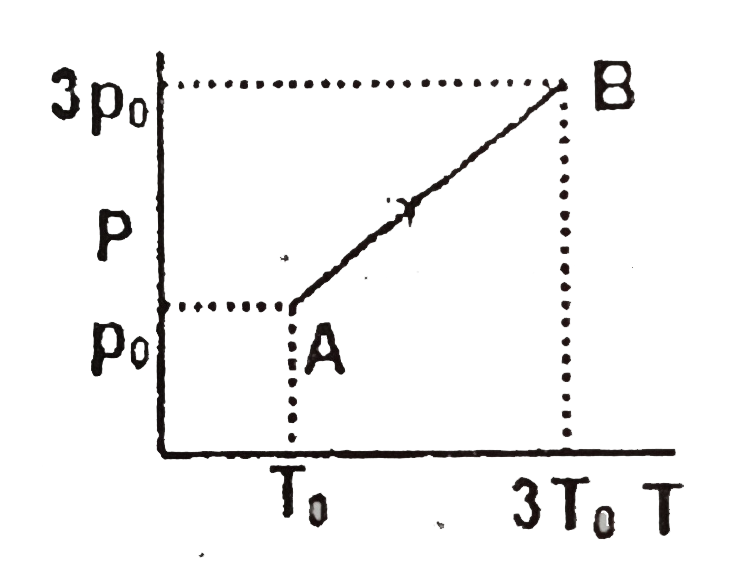
View Solution
Knowledge Check
One mole of an ideal diatomic gas is taken through a process whose P−V diagram is shown in the figure. The work done by the gas is
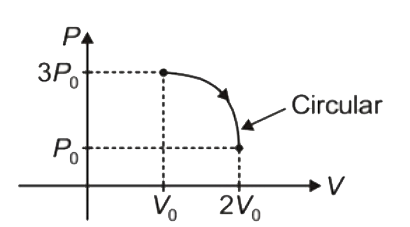 AπP0V0+2P0V0BπP0V02+P0V0C2πP0V0+P0V0DπP0V0√2+P0V0
AπP0V0+2P0V0BπP0V02+P0V0C2πP0V0+P0V0DπP0V0√2+P0V0One mole of ideal gas undergoes a linear process as shown in figure below. Its temperature expressed as function of volume V is -
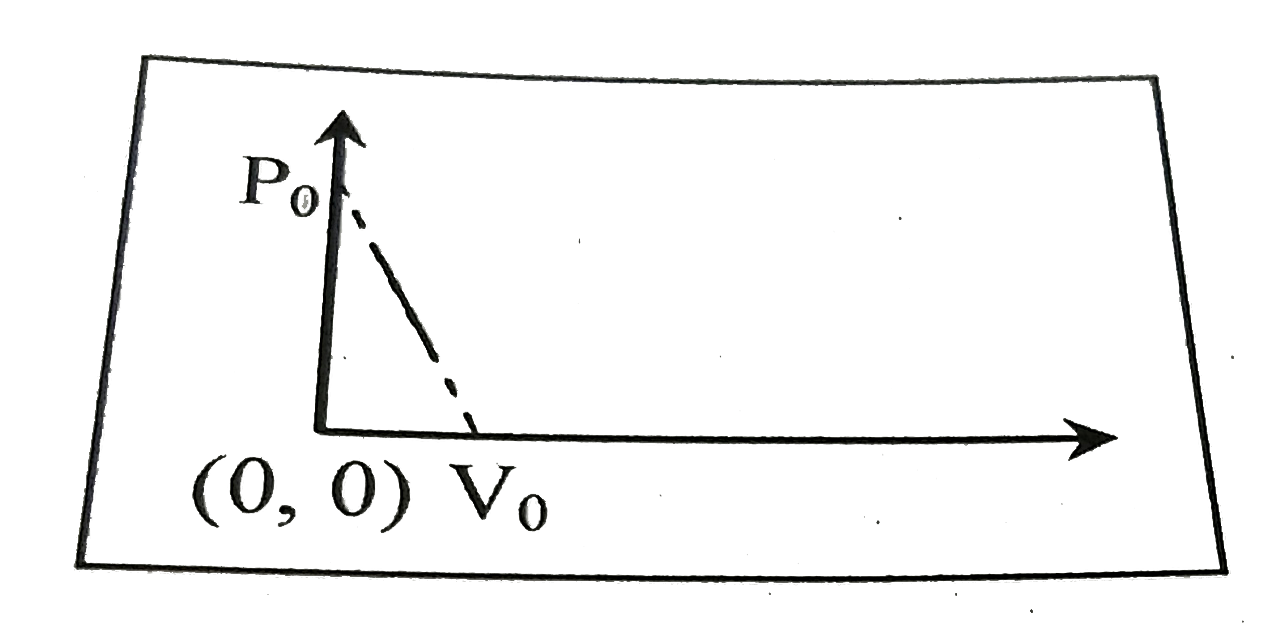 AP0V0RBP0VRCP0VR(1−VV0)DP0V0R(1−(VV0)2)
AP0V0RBP0VRCP0VR(1−VV0)DP0V0R(1−(VV0)2)In the cyclic process shown in the figure, the work done by the gas in one cycle is
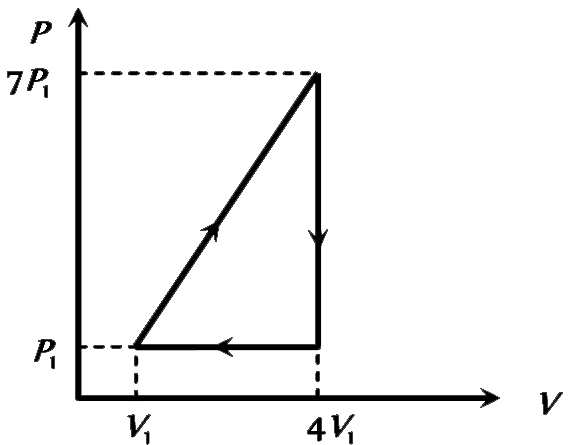 A28P1V1B14P1V1C18P1V1D9P1V1
A28P1V1B14P1V1C18P1V1D9P1V1
One mole of an ideal monoatomic gas is taken along the path ABCA as shown in the PV diagram. The maximum temperature attained by the gas along the path BC is given by :

View SolutionIf one mole of gas doubles its volume at temperature T isothermally then work done by the gas is
View SolutionOne mole of an ideal diatomic gas undergoes a transition from A to B along a path AB as shown in the figure. The change in internal energy of the gas during the transition is
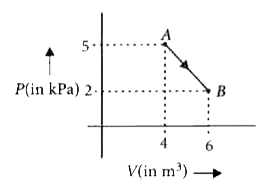
View SolutionOne mole of an ideal diatomic gas undergoes a transition from A to B along a path AB as shown in the figure,
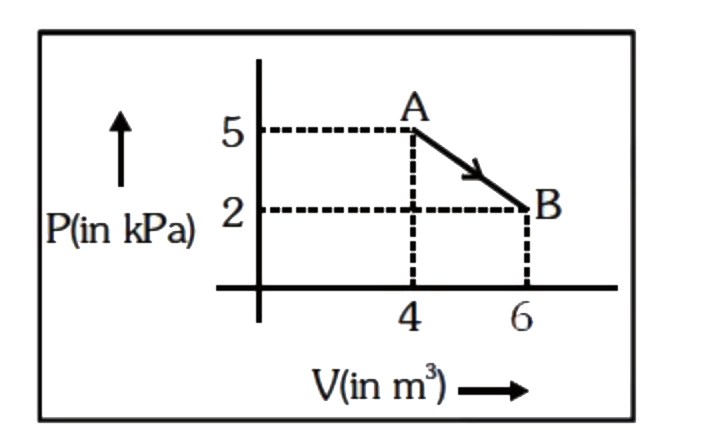
The change in internal energy of the gas during the transition is :
View SolutionOne mole of an ideal monoatomic has is taken through cyclic process ABC as shown in the graph with pressure and temperature as coordinate axes. Process AB is defined as PT = constant. Take universal gas constant to be R. Then:
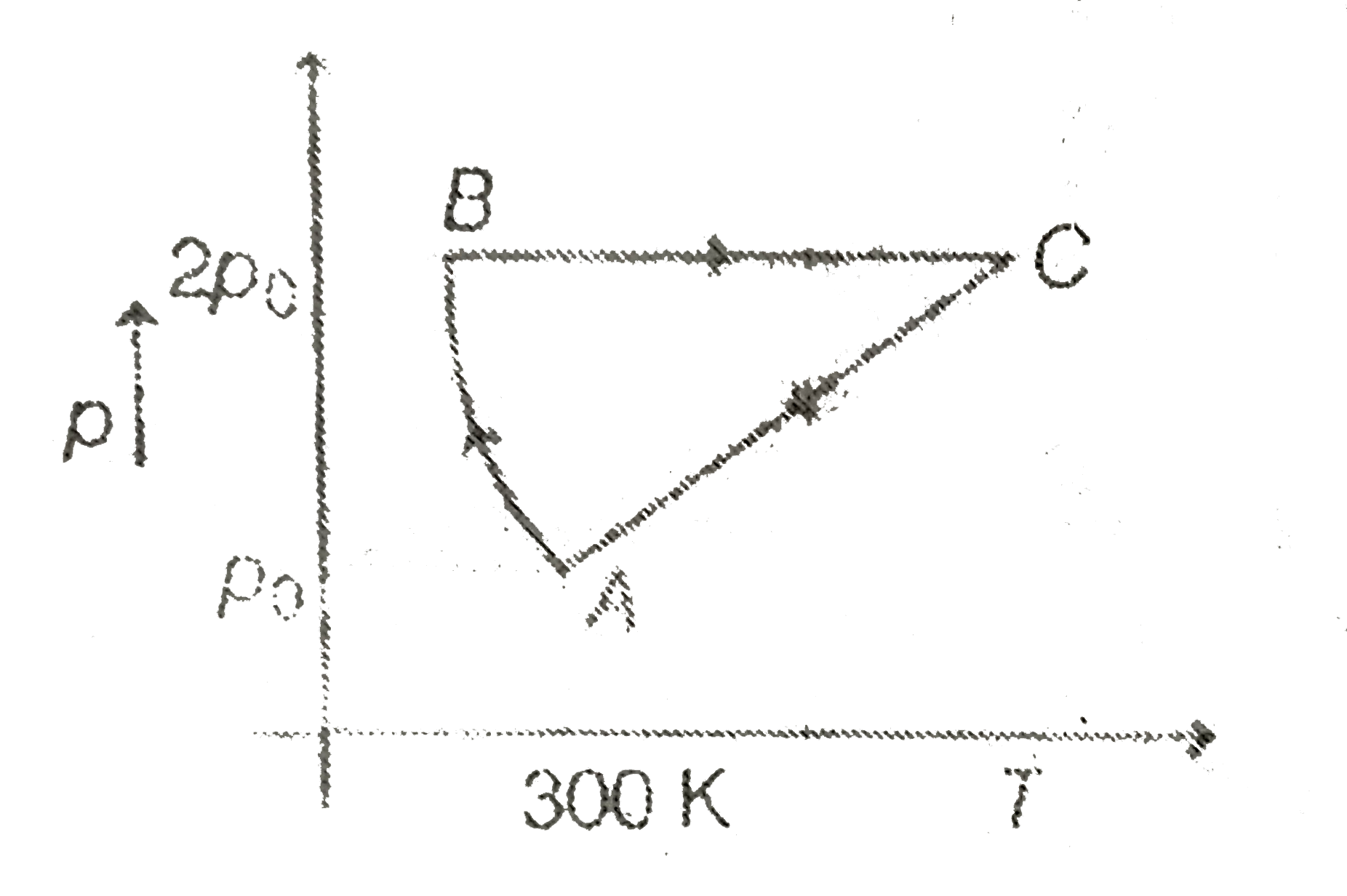
work done on gas in the process AB is
View Solution
